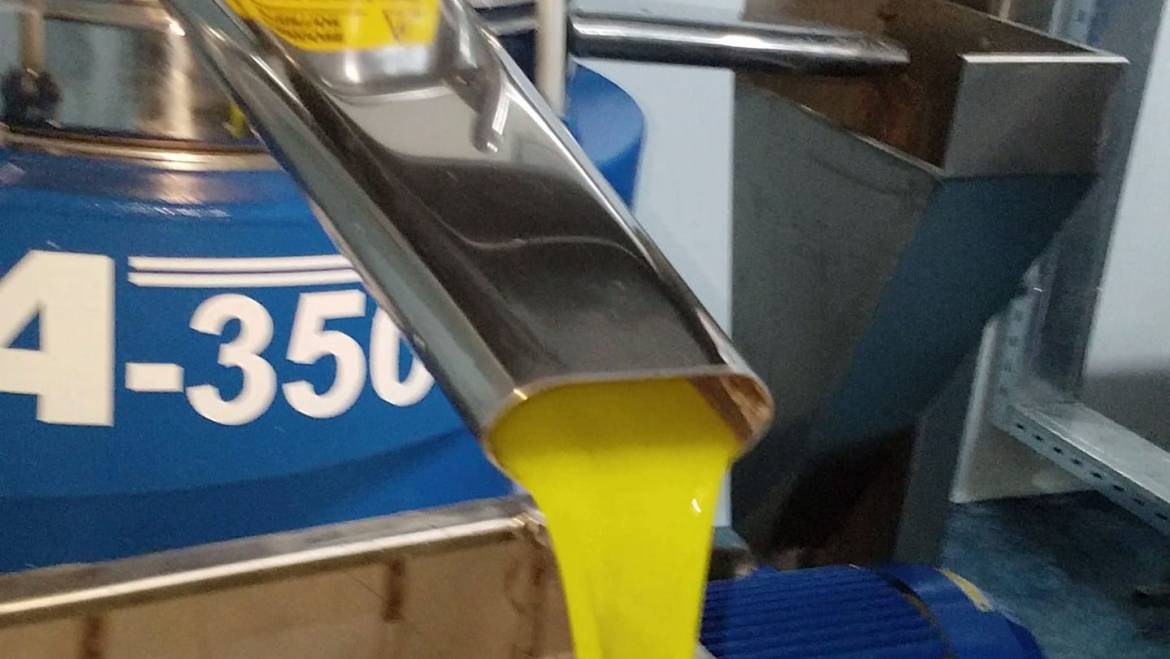Processing and Extraction consists of a slow and continuous mixing of the olive paste inside a machine called a kneader. This is a crucial and delicate step as it allows to break the water-oil emulsions that formed in the pressing phase, and blend together the must oil droplets to form increasingly larger drops that will be easier to combine in the extraction phase.
The kneading phase is carried out today in watertight stainless steel tanks in order to control the amount of oxygen, and possibly other inert gases such as nitrogen to come into contact with the paste.
During the kneading phase, which lasts about 30 minutes, the temperature of the paste must never exceed 28 degrees centigrade to preserve the organoleptic characteristics and properties of the oil.
Extraction is at the heart of the manufacturing process. In this phase, three components – pomace, vegetation water and oil must – are separated from the previously obtained paste.
The process can be discontinuous or continuous.
Extraction by pressure is a discontinuous method: the paste coming out of the muller is placed on circular filter panels, perforated in the center (fiscoli) which are overlapped, with steel discs in between to equalize the pressure and stacked on trolleys placed under the press. Increasing pressure for about 1 hour allows the oily must (oil and vegetation water) to separate from the solid part (pomace) that remains on the fiscoli.
Continuous methods, most widely used today, obtain the separation of the oil from the solid part by resorting to other physical principles than pressure. The most common extraction method is centrifugation and exploits the different specific weight of the individual components. The paste coming from the kneading machine is placed in a large centrifuge or decanter which through a high speed separates the pomace from the oily must, which in turn is divided into oil and vegetation water by a special centrifugal separator.

